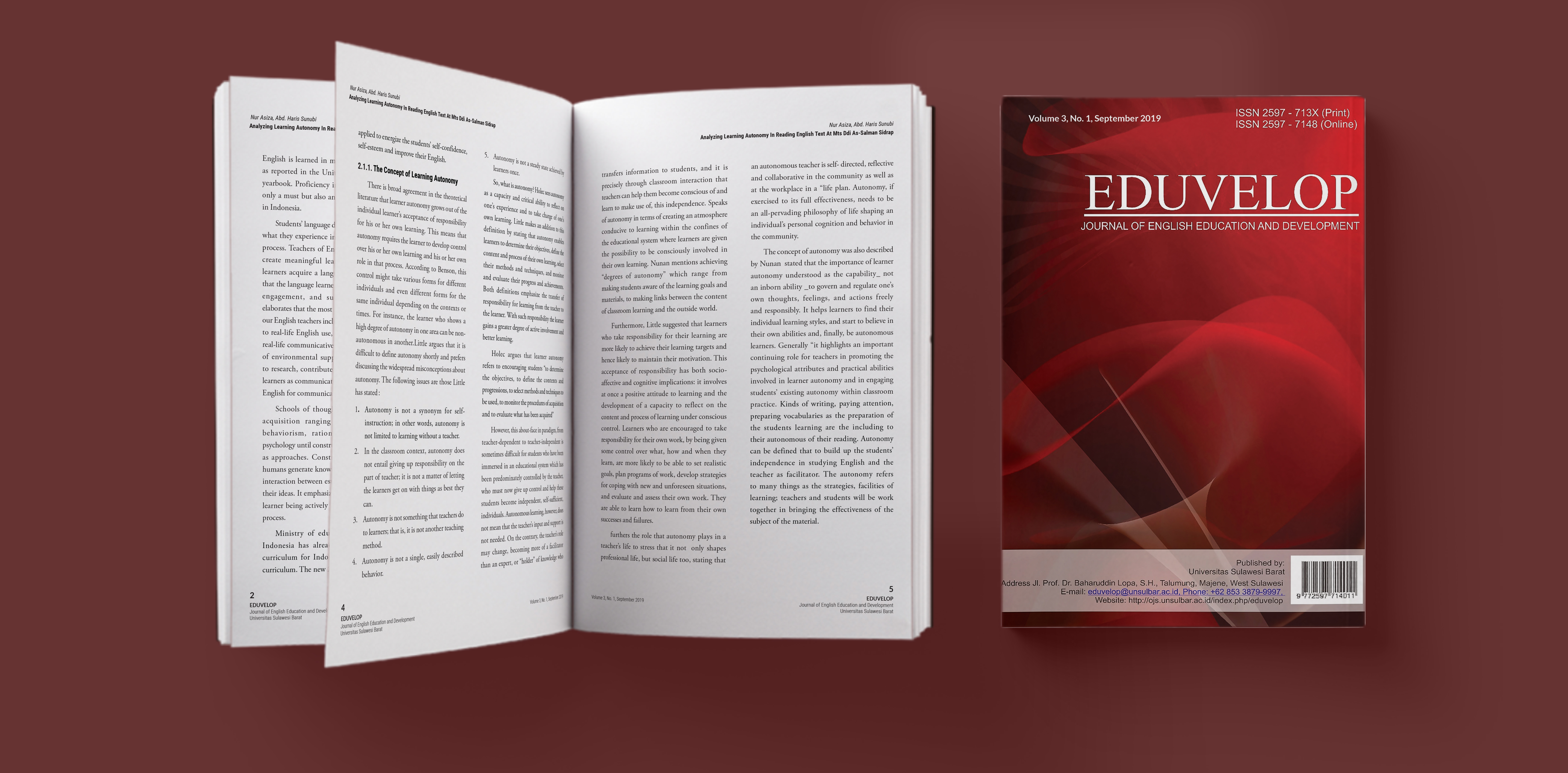Main Article Content
Abstract
This paper attempts to improve the pre-service teachers based on student's learner Autonomy. The EFL classroom by first describing the role of translation in EFL learning, then exploring Learner Autonomy can be regarded as an effective teaching method to elevate student's Translation skill. Research setting at West-Sulawesi University, Majene West Sulawesi. The method was used pre-experimental design by one group pretest and posttest. Over 22 students programming Translation were the samples of this study by using purposive sampling technique. To collect the data, researchers used translation test as instrument, it was applied on pretest and posttest. To improve student's skill towards Translation, Learner Autonomy was implemented for 12 meetings within 4 months. The notion of learner independence or learner autonomy moves into an area where learners can direct their own learning particularly in translating the sentences and text provided during the class. It could mean those learning activities which take place without the immediate intervention of the teacher. In this scenario, learners set their own objectives and follow strategies devised by them to fulfill them. This is in turn facilitates the learner to become more efficient and effective when they study independently. Learners are compelled to assume responsibility for their own learning. The result of this study was Learner Autonomy successfully elevated the pre-service teacher's Translation.
Keywords
Article Details

This work is licensed under a Creative Commons Attribution 4.0 International License.
References
- Ahmad, S. (2009). Research report entitled: The Impact of prior knowledge of the English Department Students of the Tarbiyah Faculty IAIN Ar-Raniry on their translation class performance. Jurnal Pendidikan, 6(3), 125-145.
- Ahmad, Syarwan. 2015. Improving Students Skills in Translations by Using StudentsTeams Achievement Division (STAD) Technique. AL-TA’LIM JOURNAL 22 (2), 2015, (119-128) (Print ISSN 1410-7546 Online ISSN 2355-7893).
- Ali, Shamim. 2012. Integrating Translation into Task-Based Activities – A New Direction for ESL Teachers . LANGUAGE IN INDIA Strength for Today and Bright Hope for Tomorrow Volume 12 : 8 August 2012 ISSN 1930-2940.
- Christopher Kasparek, 1983. The Translator's Endless Toil, The Polish Review, vol. XXVIII, no. 2, pp. 84-87.
- Khojasteh, Z., & Pishkar, K.(2015). The Relationship between Iranian EFL Learners’ Sensory Learning Style and Their Autonomy Level. Journal of Applied Linguistics and Language Research, 2(6), 179-189.
- Lin, C. C. (2008). Lectures. Tamkang University
- Namit Bhatia, ed., 1992. The Oxford Companion to the English Language. Oxford Press, pp. 1,051–54.
- Nida, Eugine. A and Taber, Charles. A, 1982. The theory and practice of translation. E.J Brill: Nedherlands.
- Rogi, S. (2009). Beberapa masalah dalam Penerjemahan. Paper presented at the Seminar held by Department of Germany, Faculty of Literature, Sam Ratulangi University, Manado.

